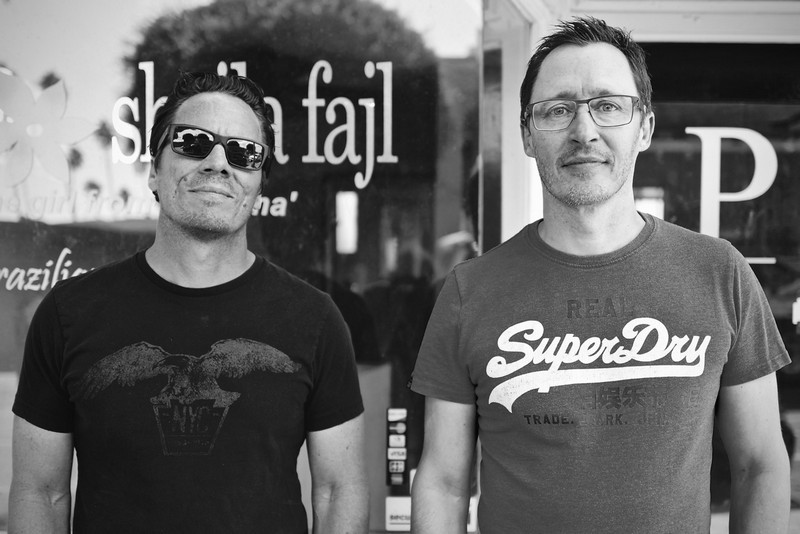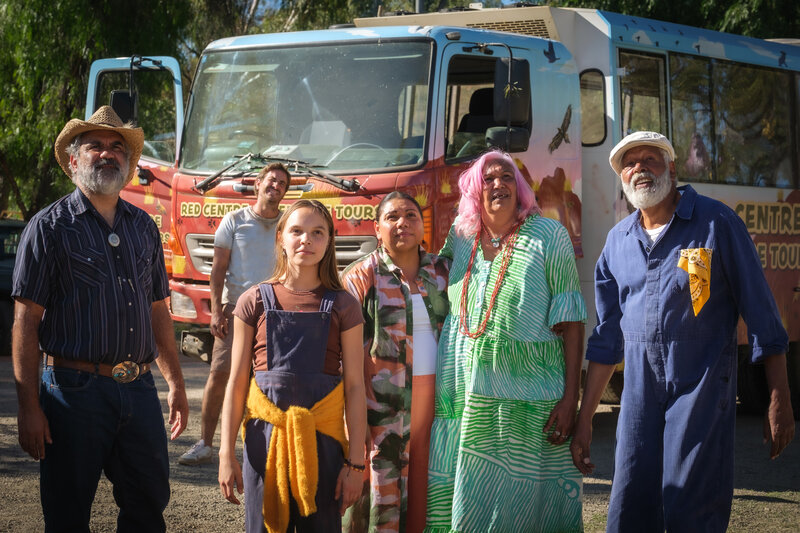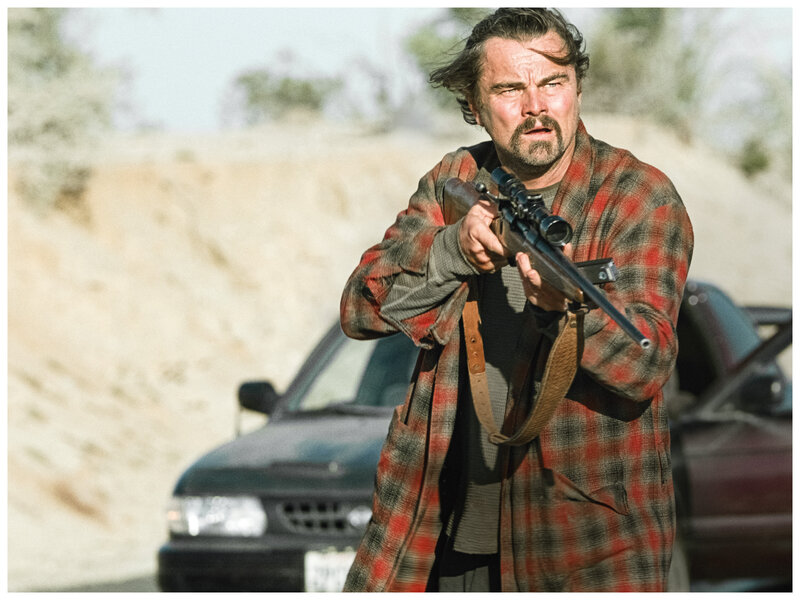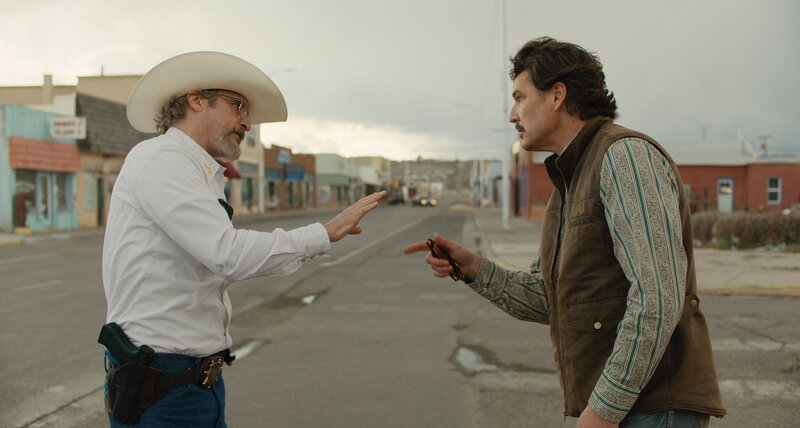The documentary Happy Happy Joy Joy (now available on Docplay) explores the influential and groundbreaking animated series Ren & Stimpy, as well as the rise and fall of its controversial creator John Kricfalusi, through archival footage and extensive interviews. Patrick Scott sat down with the directors Kimo Easterwood and Ron Cicero to talk about the film, the cartoon and the elephant in the room.
Patrick: I understand going into to the documentary, you hadn’t seen much of the show at all. I was wondering what compelled you to make it in the documentary in the first place?
Kimo Easterwood: So, I had not seen an episode at all. Ron had seen one episode, I believe, in college. So, a friend of ours who’s in the documentary named Todd White, he came to me with the idea and because he was friends with John, he said you guys should really do something on this guy, John. That’s kind of what started the whole ball rolling. Once we started to dive into it and do a little research on John as well as the show, it was a no brainer to start to go full force with the documentary.

Patrick: I understand you almost completed a first version of the documentary which was basically a celebration of the show, but when the Buzzfeed article was released regarding John K’s actions, you had to change what your film was about. How much of the film did you have to restructure?
Ron Cicero: The entire film, really. I mean, we are literally typing up the end credits and the news broke and we realized we had a toxic film or at least we felt we had a toxic film because the elephant in the room wasn’t going to be addressed and John hadn’t agreed to be interviewed prior to our second go round at the film, so and it was really tricky.
It’s interesting you mentioned structure because that was the toughest part because a lot of these events happened well after the show’s production. So how do you integrate this additional story element when the primary characters, namely Robyn, was not around during the production of the show? Chronology wise, it gets really tricky. You can’t introduce her in the beginning because she’s not an artist and she wasn’t there. And people are like, who is this random person? So, it was a complete tear down and rebuild.
Kimo: Yeah, we did go back and reinterview some other people and did follow up interviews after that.
Patrick: Did you feel like you were able to adequately cover this whole new area within the film or were there some parts of it that you felt like you didn’t get a chance to cover?
Ron: I think we had plenty of coverage, it’s just really what we want the film to be about, right. Our intention from the very beginning was always to make it a Ren and Stimpy documentary. It then took this right turn where it became not only about Ren and Stimpy, but the art versus the artists. Can you still love the show despite the fact that the creator did some awful things? So that was really kind of the deeper meaning that bubbled up with the film.
This was a film we knew was not going to make everybody happy, and we also knew it was going to be almost everybody happy in the sense that if you’re a fan, you’re going to love the documentary, and you’re just going to be so stoked that it was made at such a high-quality level that that’s going to be really exciting. But with the John aspect of it, you know, some people are like, oh, you should have piled on more, and other people are like, oh, this is a total John K hit job and what does she have to do with the show? So, we knew in that respect it was going to be really hard to make everybody happy.
That being said, we’re both really stoked with the way the film came out. I mean, it hits Sundance, it’s got this great reception. I think the original film was great and it really did just celebrate the show because there’s a lot to celebrate. But there’s a whole other level when this news came out and we were able to integrate John into the greater story, I think it became a film that was not just about Ren and Stimpy, it’s about these bigger creative issues, these issues in society. How do we treat great work after we find out that the artist has done awful things? I mean, certainly John K isn’t alone and this is a question that’s going to constantly come up, so I would hope we’ve contributed to that discussion.
Kimo: Another element we had to juggle was we didn’t only want fans to enjoy the show. We wanted somebody off the street who had not known anything about this cartoon, not even a cartoon fan, could see this movie and appreciate it. There was a lot of great technical stuff we could have put in there that would have made the hardcore fans really happy, but at the same time, you tend to alienate people that are into that as much, so that was another balancing act for us.
Patrick: Do you think it’s possible in this particular case to separate the art from the artist?
Ron: In the case of Ren and Stimpy, we interviewed a number of fans and we heard these heartbreaking stories where somebody would say, you know what? The last time I saw my mom smile before she passed away was when the two of us were watching Ren and Stimpy together. How do you tell somebody that you have to get rid of that life experience because John K did something wrong? And you’ve also got to realize it wasn’t just John K’s show. He was surrounded by a huge group of incredibly talented artists. I could go through a long list from voice actors to artists to scriptwriters. As much as he was the figurehead, the show wouldn’t have been what it is if it wasn’t for these other artists. And that’s also something that we really wanted to highlight in the film.
Kimo: Robyn does say it best. She says it in the film that if you’re struggling, trying to deal with this, then just think of all the other people that that contributed and enjoy it on that level.
Patrick: The film doesn’t appear to be judgemental in any way toward John K, it seems to just present the facts as they are. Why was it important for you to take a neutral standpoint with these contentious issues?
Ron: I’m glad you asked that, because that drove some people crazy. Here’s the deal, we went a little old school with the documentary, and the reason for that is we both feel, especially in the States, that unless people are given an opinion, they’re completely lost. They’re either a Fox News person or they’re a CNN person, regardless of what it is, regardless of its politics or culture or whatever, like there is a kind of intellectual laziness. So, to step back and say, OK, here’s all of it, obviously, as filmmakers, as human beings, we are not condoning what he did. And if you don’t look at some of those last scenes and understand that they were kept in the film for a reason. Then I can’t help you. That is really the reason we did it, we wanted to put it out there and not have to tell the audience what to think. Many people, the really smart audience members and the critics, etc, notice, oh, my God, I can’t believe they got that on camera. I can’t believe they kept that in. I can’t believe this was also in the film. It’s those kinds of moments that if we were going to be more opinionated, we wouldn’t have put that in the film.
Patrick: As you said earlier, in the first version of the film, John K wasn’t in the documentary. Why do you think he was more cooperative after the story came out?
Kimo: You’d have to ask John to be quite honest. I mean, we did pester him a lot. Part of it could be he wanted to speak his piece on it because we were going to be his only platform around that time. So, you know, as for other reasons why, I’m not sure. But that’s some of them. And we did bother him a lot. And then it was Richard Purcell who is still good friends with him. Richard was really instrumental in sort of facilitating John to go forward.
Patrick: Were you aware of any of the allegations before the story was released?
Ron: No. The first film was done, it was completely finished. We sent it to Viacom just so we could get licensing approval. They didn’t have anything to do with the film, but they did need to sign off on the license and the credits were being typed up, and Tuesday we got a call, sort of a cryptic call, saying, hey, there’s a story coming out about John. It might really change your film. And then it came out on Thursday. And to be honest, we were shell-shocked, you know, because nobody had really let on. So, yeah, it was a surprise.

Patrick: The sacrifices you made to finance the film were quite extraordinary. Ron, I believe, you sold your house and your car. When the news came out and you had to restructure the whole film, did you ever think you might have to abandon the project?
Ron: I’m trying to remember if I started thinking that way before or after I started weeping uncontrollably. Yeah, it was awful. It was absolutely awful because, you’re in so deep, you’re already in two and a half years. You’ve made this huge financial sacrifice. I mean, I’m married. I also have a son. It’s like, if we stop now, we’re going to have like two hard-drives that are ultimately just doorstops or it’s like, well, do I put whatever is left on the table and try and salvage this?
And, not only that, these films have a tremendous amount of pre-production work, and I was producing as well. It’s not like I could even take other work during this time, it was just so intensive. It was rough. Looking back, I’m really glad I did it because it was one of those things I always wanted to do. It’s now leading to these other projects which were so excited about. Nobody could foresee this, though. When you’re in the mix or you’re in the edit and things are going awry, as they always do with any kind of film project, you’re not thinking, oh my God, this is going to be great in two years. You’re like, oh, my God, I’m going to be destitute.
Kimo: Deep, deep down, we always knew that we had something great when we were doing it. It is tough, especially because Ron was paying for it. He was producing it. But we always knew we had a great film and we just you just figure out a way to finish it. We did some Indiegogo as well to raise some funds. But, you know, you don’t have a choice, really. Either you have two hard-drives as doorstops or you figure out a way to finish it. You’ve got to just put it out there and yeah, so glad we did.
Patrick: Finally, how would both of you describe the legacy the Ren and Stimpy show has on the animation world?
Ron: Oh, I mean, it’s indisputable in the sense that Adult Swim, which is a collection of every sort of adult cartoon you can imagine now, that probably wouldn’t have been around or would have been around a lot later had John K and his crew not broken through and proved to executives that cartoons can be viable with adults as well as kids. And as you see in the film, there are cartoons that are still being produced that I wouldn’t say rip off, but have a strong homage to many of the visuals that you see regularly in Ren and Stimpy. If you haven’t seen it, it really is well worth checking out because the humour I mean, we’ve seen some of these episodes hundreds and hundreds of times, and they still make us laugh. There’s just something about it that is sort of magical.
Kimo: Yeah, John really did change the sort of vision of animation at that time. I mean, you can’t even put a number on the amount of people not only did it influence, but just the amount of cartoons that were inspired by that show. And it’s a guy that’s stuck to his vision. I mean, he was the guy that wasn’t was going to get his vision out there no matter what, and he never quit. I think that’s a sort of a legacy as well.
Other reviews you might enjoy:
- Russian Doll (Netflix) – streaming review
- Two documentaries – Happy Sad Man and Yuli: The Carlos Acosta Story
- My Name is Gulpilil: Interview with director Molly Reynolds

Patrick Scott is a recent graduate from Monash University with a Bachelor’s Degree in Media Communications. He is a freelance film reviewer based in Melbourne, and contributor to The Blurb.





